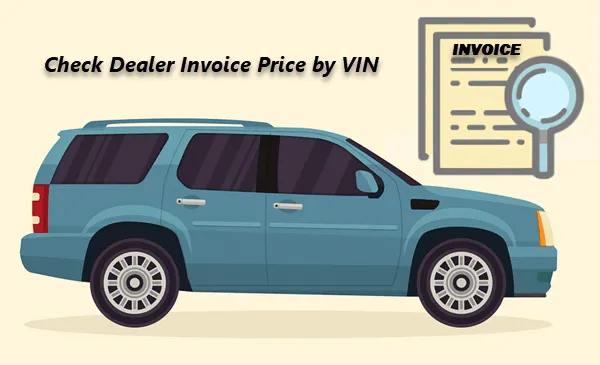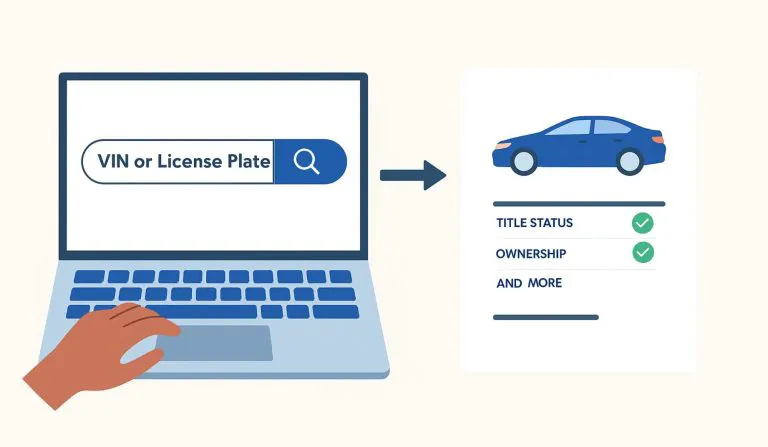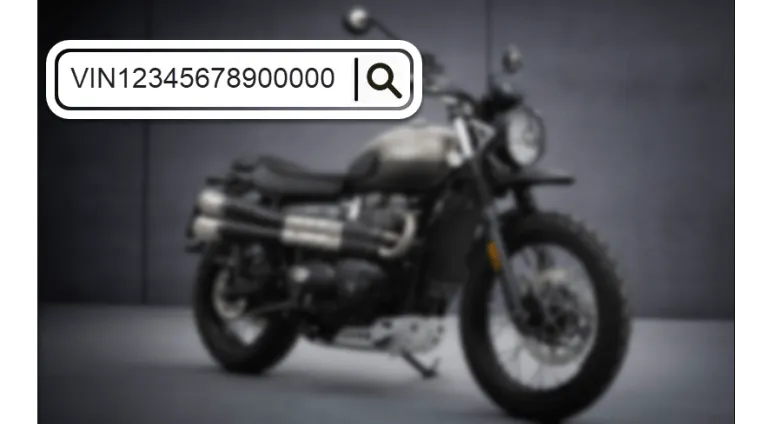Where to Find VIN (With or Without the Car) – Full Guide
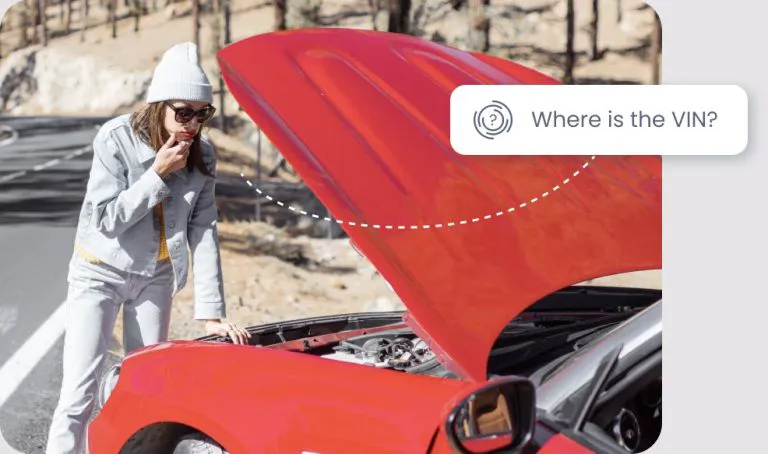
The vehicle identification number, or VIN, is a car’s most important piece of ID. It’s tied to everything from the vehicle’s origin and build specs to its entire history. Whether you’re researching a used car, registering or insuring a vehicle, or finding parts for replacement, the VIN is your key reference. So, how to find the VIN? What if you can’t find it or you don’t have the car in front of you? In this guide, we’ll show you where to find the VIN, both on the car and off.
Table of contents
What is VIN?
Before diving into the details, let’s start with the basics: what exactly is a VIN?
You can think of the VIN as a car’s fingerprint, which is assigned when it’s first built and permanently tied to its identity and history. It can tell you where the car was built, who made it, what engine it uses, its body style, and model year, as well as what it’s been through over time. From registration, title records, to service reports and insurance filings, VIN is connected to nearly every major event in a car’s life.
Most modern vehicles have a 17-character VIN, made up of numbers and letters (except I, O, and Q to avoid confusion with digits), and it follows a global standard that defines what each character means. For pre-1981 classic cars, however, the VIN might be shorter, between 5 and 13 characters, and may not follow today’s standardized format.
Where to find VIN?
VINs are designed to be easily accessible, appearing on the vehicle (on the dashboard or the driver-side doorjamb) and various important documents (title, registration, insurance card, etc). Below, we’ll walk through exactly where to look.
🔔 When buying a used car, it’s perfectly normal and reasonable to ask the seller for the VIN, if not already listed in the ad. The VIN is generally not considered private, so most sellers should be willing to provide it upon request.
Find VIN on a car
The most common place to spot the VIN is on the dashboard, right where it meets the windshield on the driver’s side. Just stand outside the vehicle, and you can see it through the windshield’s lower-left corner. In some cars, it’s visible from the driver’s seat.
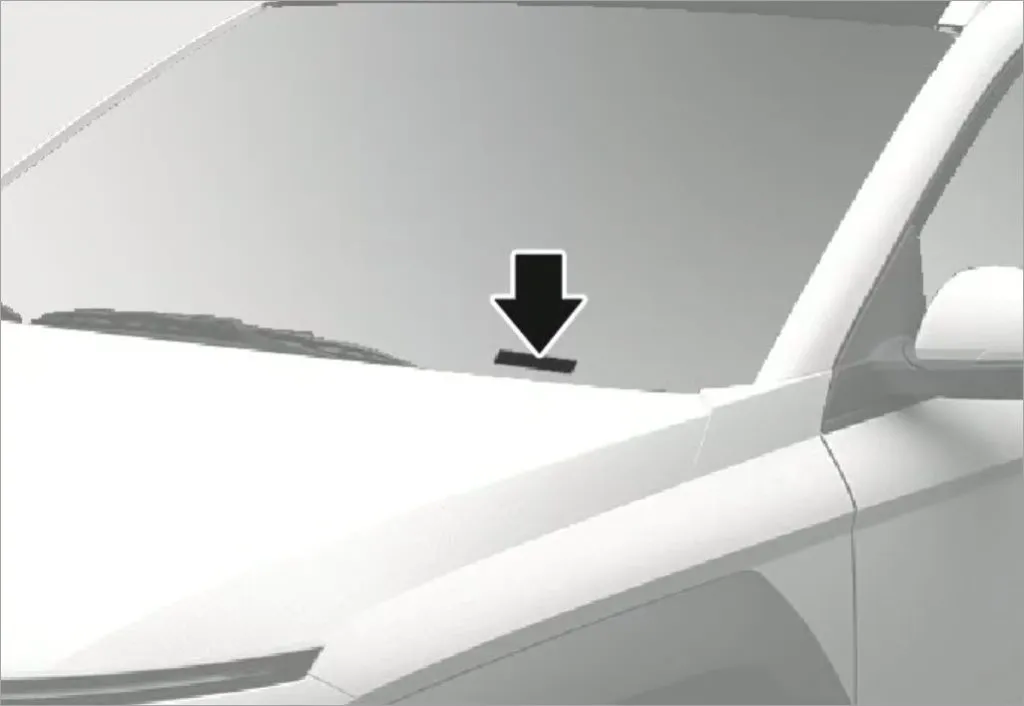
Another place to check the VIN is on the driver-side door jamb. Open the driver’s door and look along the door jamb near the latch, or the inside edge, and you’ll see a label or metal plate with the VIN printed on it.
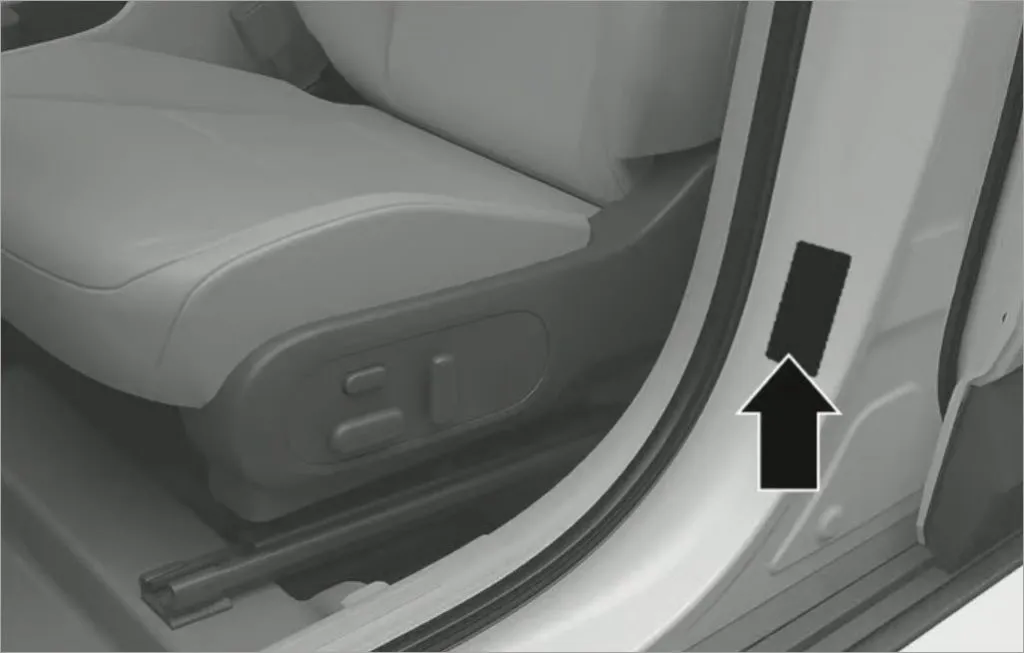
This is the Vehicle Certification Label, a label required by NHTSA{{National Highway Traffic Safety Administration (NHTSA) is an agency of the U.S. federal government, part of the Department of Transportation, focused on automobile safety regulations.}} to be affixed to any on-road vehicle certifying safety compliance. Along with the VIN, it shows manufacturer, production date, vehicle type, Gross Vehicle Weight Rating (GVWR), and Gross Axle Weight Rating (GAWR).
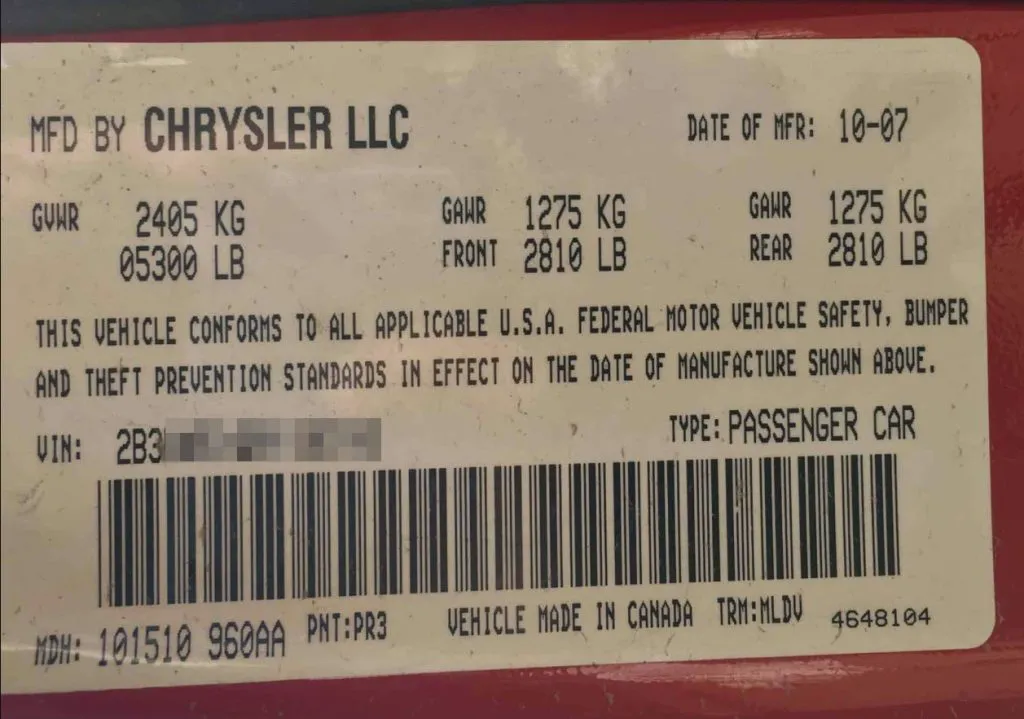
In addition to those easily accessible areas, VINs are strategically stamped on various car parts to deter theft{{According to the Federal Motor Vehicle Theft Prevention Standard, high-theft vehicles must have their VIN on major parts including: engine, transmission, hood, fenders, side and rear doors, bumpers, quarter panels, and pickup/cargo boxes.}}. These “confidential” VIN locations differ among manufacturers and models, often found:
- Under the front passenger seat
- On the liftgate
- On the floor underneath the spare tire
- Inside the rear wheel well
- On the firewall inside the engine compartment.
Some cars may have the VIN etched on the windows as an extra measure to prevent theft. If you’re buying a used car and want to make sure the VIN hasn’t been swapped, these are great spots to cross-check.
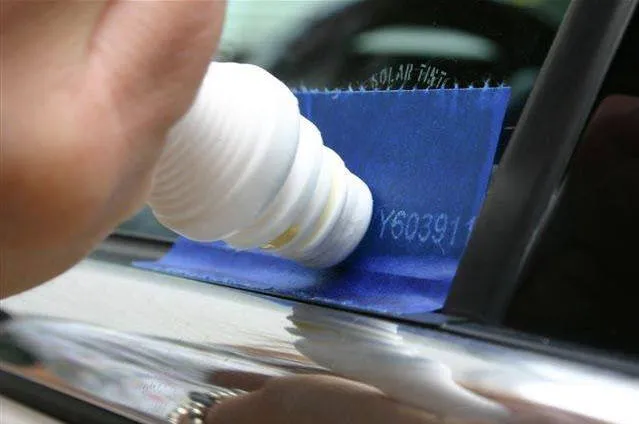
Pre-1981 classic car
If you’re dealing with a classic car built before 1981, things might be a bit trickier. Back then, VINs weren’t standardized with a varying length and format, but still, many automakers placed them in familiar spots like the bottom corner of the windshield, the driver-side door frame (A-pillar, B-pillar, and roof rail).
Can’t find it right away? The VIN may be tucked away in less obvious places. For example, on 1967 and earlier Ford models, the VIN is inside the glove compartment, stamped on the right-hand dash panel, or on the frame between the steering gearbox and firewall.
💡If you’re still not sure where to look, try a quick Google search for classic car make + year + VIN location. You’ll likely come across helpful forum threads or community posts that point out “hidden” VIN locations.
Motorcycle
Like cars, motorcycles have their VINs stamped in both obvious and hidden spots. Typically, you can find the VIN on the left or right side of the steering head, or frame neck near the front fork. Turn the handlebars, and you should see it clearly.

You can also check places on the engine, near the transmission or the footpeg, or even under the fuel tank or the seat cushion for the VIN.
Trailer
Trailers have their VINs. Look for a sticker on the tongue, near the front hitch, or the left, roadside front corner of the coach, near the bottom of the sidewall – the VIN is usually easy to find. If it’s not there, check the entry door, the landing leg, or inside the cabinet.

If you’re inspecting a motorhome, its VIN should be on the driver’s side dashboard and visible through the windshield, or on the driver’s side door frame, just like in a regular vehicle. The VIN may also appear near the entry door, on the interior wall behind the driver’s seat, or inside the cabinet or cupboard, etc.
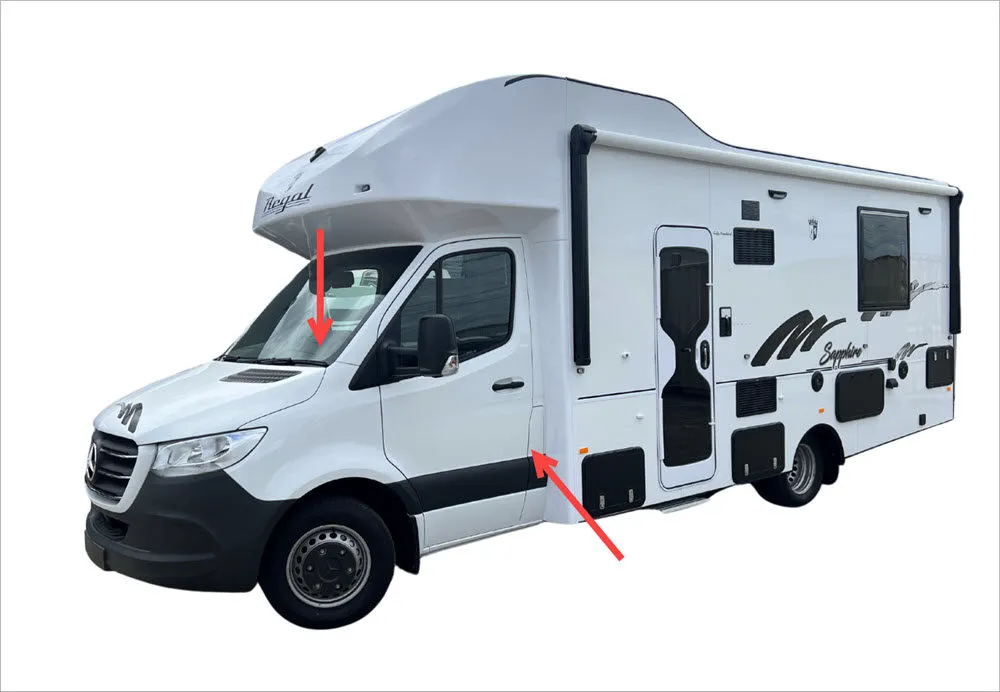
Find VIN without a car
Don’t have the car in your possession? No problem. Your VIN is also listed on various vehicle-related documents.
Title
This document confirms the legal ownership of a vehicle and lists key details like the VIN, make, model year, license plate number, registered owner’s name and address, and other mechanical information about the vehicle. Depending on the state, the VIN might appear under slightly different labels like Vehicle ID Number, Identification No, etc.
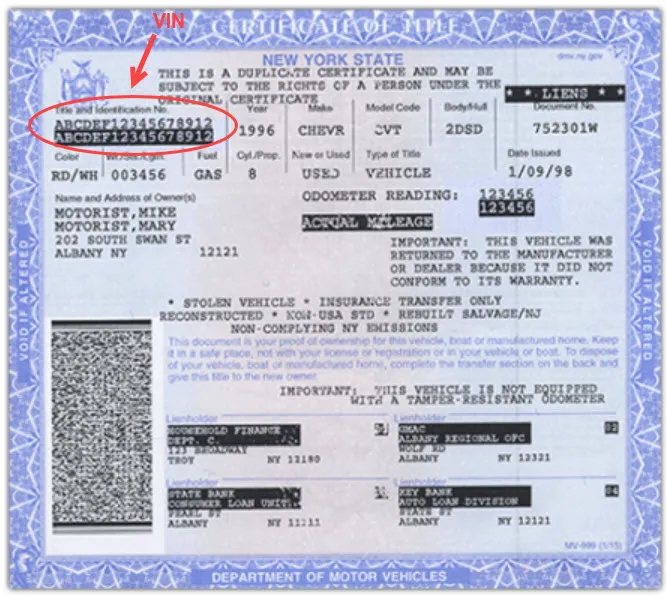
Title Number VS VIN (Tap to read)
While reviewing your title, you may notice a title number – a separate identifier for the document itself. In some states (e.g., New Jersey), this number can even be 17 characters long, making it look a lot like a VIN. But these two codes are not the same thing. VIN is the unique identity of a vehicle, while the title number is just a reference number assigned to a certain title document.
| Aspects | Title Number | VIN |
|---|---|---|
| Length | 7 to 15 characters, varies by state. | 17 characters long. (Pre-1981 classic cars may have shorter VINs (5 – 13 characters.) |
| Format | Varies by state, and generally no strict standards. | Follows a standard format (excluding characters O, I, Q). |
| Is it permanent? | No. It changes with vehicle ownership. | Yes. It stays with the vehicle for life. |
| Where to find it? | On the title document and registration card | On various spots on the vehicle and related documents. |
Registration card
Your car’s registration card includes the VIN as well. It may be printed in different areas depending on the state. If it’s not clearly labeled, look for a 17-character alphanumeric string – that’s your VIN. In some states, the VIN is also printed on your registration sticker, placed on your windshield or license plate.

Proof of insurance
The proof of auto insurance or insurance card is evidence of an active car insurance policy. It lists your vehicle’s VIN, along with the vehicle’s make, model, year, your name and address, the insurance company’s name, the policy number, and effective & expiration dates.
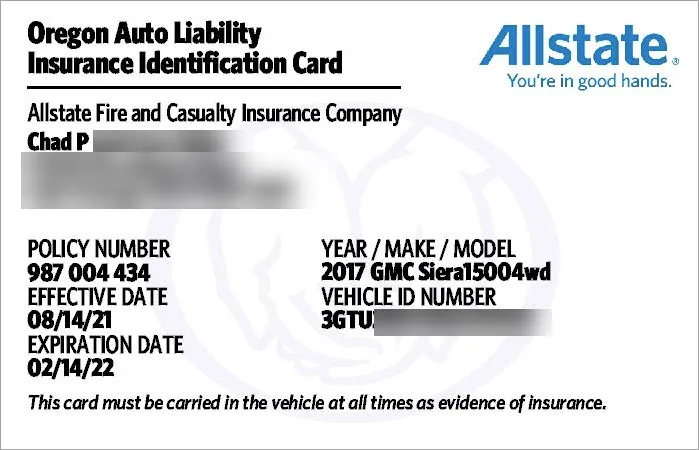
Service receipts
Had any work done at a dealership or repair shop? Pull up the receipts – they almost always include your VIN. Besides, it contains the car’s make, model, year, license number, and odometer reading at the time of service.
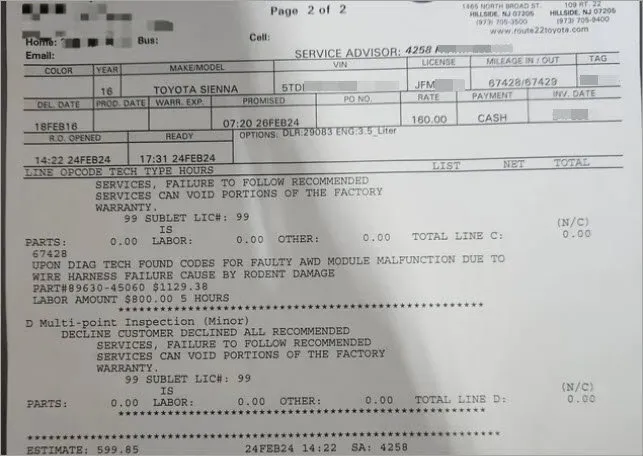
Manufacturer app
If you’ve connected your vehicle to the manufacturer’s app (e.g., FordPass, myChevrolet, Toyota App), they might store your vehicle’s information like VIN, trim, production date, and so on. Log into the app and look for the Garage or My Vehicles section to check your account or car info.
How to check if a VIN is genuine?
VIN swapping, or known as VIN cloning or VIN tampering, is a growing scam in the used car market. Criminals take a VIN from a legitimate vehicle (usually the same make and model), then place it on a stolen or salvaged car to cover up its true identity. Beyond just replacing the VIN plate, they often forge the car’s documents, using the swapped VINs to obtain a title, registration, and license plate (possibly in another state), to make it harder to trace.
If you’re shopping for a used car, it’s important to verify the VIN is genuine and consistent. And here are a few simple checks you can do.
Look for signs of alteration
Start by checking the most common visible VIN location – the dashboard at the driver’s side. Look for suspicious signs like scratches around the plate, loose molding, excessive glue or residue, or uneven font or spacing on the VIN itself.
Next, examine the Certification Label on the driver’s side doorjamb. Is it firmly attached to the vehicle? Does it feel smooth and glossy? A proper label should be high-quality and tamper-proof. Watch out for peeling edges or leftover adhesive, which could be signs it’s been removed or replaced.
Unfortunately, etched VIN plates and fake certification stickers are surprisingly easy to get online, which is why scammers often start by tampering with these visible spots. So, don’t stop your inspection there; check other parts of the car and dig deeper.
Cross-check the VINs in multiple spots
Most cars have hidden or less obvious VIN locations for security verification. Look at two or three of these places: under the passenger seat, on the deck lid, trunk, rear wheel well, transmission, the front of the engine block, or firewall inside the engine compartment, and make sure the VINs all match. They should also line up with the number on your car’s documents.
If you’re unsure, consider bringing the car to a trusted mechanic. They can help you verify all the VINs across the vehicle, check if the VIN matches the car’s actual engine type or transmission, and identify deeper structural damage or past accidents that the seller didn’t disclose.
Use an OBD2 scanner to pull the VIN
An OBD2 (On-Board Diagnostics second generation) scanner is a handy device that interprets data directly from a vehicle’s computer system, and one of the reliable ways to verify a car’s VIN.
To connect an OBD2 scanner:
- Make sure the ignition is off
- Plug the OBD2 scanner into your car’s OBD port, usually under the dashboard on the driver’s side, near or beneath the steering wheel.
- Turn on the ignition.
- Power on your OBD2 scanner if it doesn’t turn on automatically.
- Follow the on-screen instructions to use the scanner. Navigate to the Vehicle Info or similar options from the menu to find the VIN.
Compare the VIN on the scanner against the physical VIN. If they don’t match, the car’s identity may have been altered. Besides, you can use this tool to pull the mileage data to detect potential odometer rollback – an illegal practice of altering a vehicle’s odometer to make it lower than the vehicle has actually traveled.
But beware: OBD2 scanners aren’t 100% accurate. In some sophisticated VIN swapping scams, criminals may reprogram the car’s ECU (electronic control unit) to overwrite the VIN. That means even the scanner could return a fake VIN, not the original.
Run a vehicle history report to spot inconsistencies
A vehicle history report is one of the easiest ways to uncover the truth. By comparing the official records tied to the VIN with what you’re actually seeing, you can spot discrepancies that point to a VIN scam or other shady practices. Even if everything looks fine on the surface, the report might expose deeper issues like past accidents or salvage titles that aren’t visible at a glance.
There are plenty of sites selling vehicle history reports, but we recommend reputable providers like Carfax, AutoCheck, Bumper, and Vinaudit{{These services are NMVTIS-approved data providers. Through accessing the NMVTIS (National Motor Vehicle Title Information System), they can provide more reliable data and history about a vehicle.}}. They collect data from extensive and trustworthy sources, including government agencies, insurance companies, junk yards, and body shops, to give you a clear timeline of a vehicle’s past.
Depending on the provider, a report may include:
- Vehicle specifications and equipment
- Accident and damage history
- Title and registration records (with mileage)
- Ownership
- Sales listing and auction history
- Maintenance and service records
- Recalls
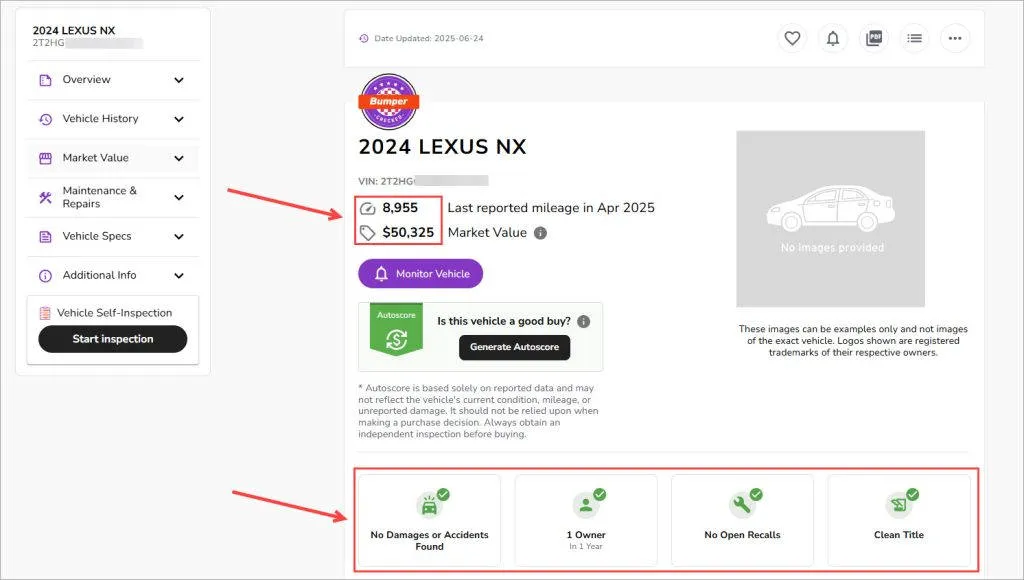
Watch out for unusually frequent vehicle registrations in different states or ownership changes. They could signal attempts to hide the vehicle’s true history or work around stricter regulations in certain states. Also, keep an eye on the mileage. If the odometer says 50,000 but the report shows 90,000, or if there are sudden jumps or drops in the mileage logs, that could indicate a VIN cloning or odometer rollback.
Read more: How to Read a Vehicle History Report: Pro Tips to Spot a Problem Car
What if you don’t have the VIN?
If you want to learn about a car’s specifications or detailed history but don’t have its VIN, don’t worry. A license plate number can work, too. Most vehicle history report providers like Bumper and Carfax let you search by the license plate. Simply enter the number into their tool, and you’ll receive a detailed report packed with insights.
While the report won’t reveal the linked VIN due to privacy concerns, you’ll still get the same kind of data as a VIN-based search, including specs, accident history, mileage, service records, and more.
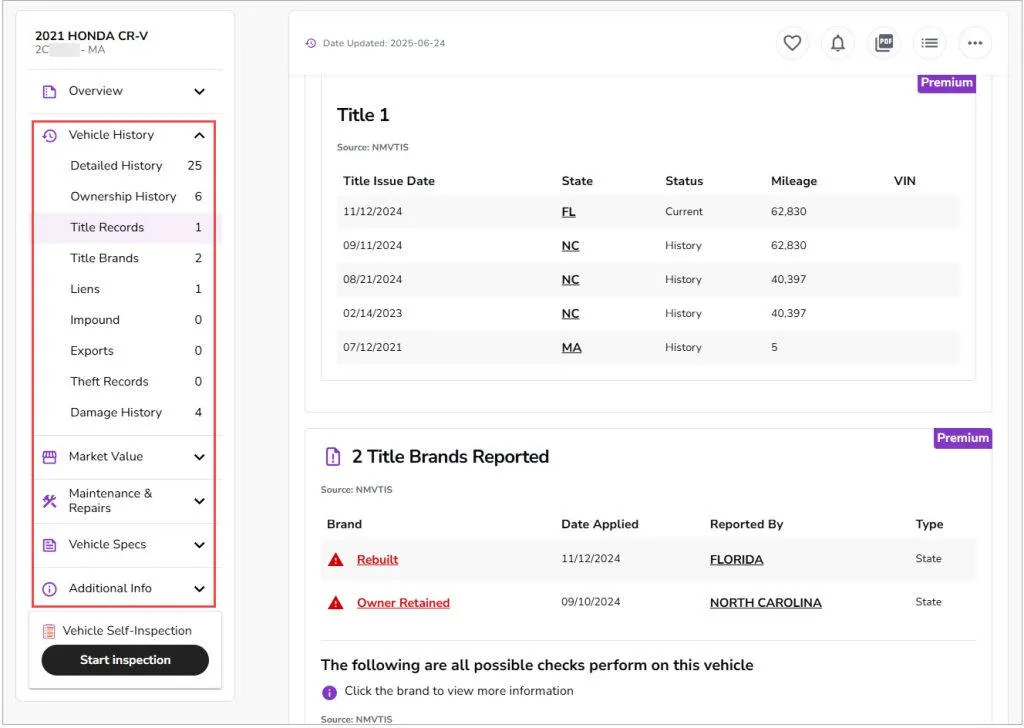
To wrap up, VIN is the most important identifier of a vehicle and is easily accessible. From dashboard plates to registration cards and service receipts, there are more spots to locate and check a VIN than most people realize.
If you’re considering a used car, always verify the VIN on and off the car, and use it to investigate the vehicle’s history. A thorough check could save you from big problems down the road. If anything seems off – mismatched VINs, sketchy records, suspicious seller, trust your gut and walk away.
FAQs
1. Is VIN in multiple locations on a car?
Yes. You can find the VIN in different spots on a car. The most visible and regular places to check are the lower left-hand corner of the dashboard and the driver-side door. Additional VIN locations will vary by brands and makes, and are often in less visible places for anti-tampering purposes.
2. How to find my VIN without the car?
You can find it on a variety of vehicle-related documents, such as the title, registration card, auto insurance card, and car service receipts. If you’ve linked your vehicle to a manufacturer’s mobile app or online account, the VIN may be accessible there.
3. Does VIN change?
No. VIN is a permanent identifier assigned to a vehicle during manufacturing and doesn’t change throughout its lifespan, even if major parts or equipment are replaced. However, in some cases, like older vehicles, rebuilt or homemade cars where the original VIN is missing or destroyed, the DMV can issue a state-assigned VIN. The process will require proof of ownership and a formal inspection by authorized officials.

 View all of Brinksley Hong's posts.
View all of Brinksley Hong's posts.

